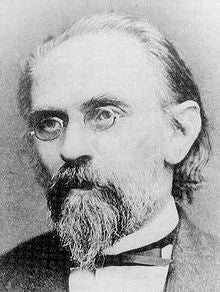Laboratories rely on a variety of tools for mixing, measuring, transferring, and testing—essential instruments that have supported scientific progress for centuries. One of the most widely used is the Erlenmeyer flask, a laboratory vessel with a flat base, conical body, and cylindrical neck. Designed in 1860 by German chemist Emil Erlenmeyer (1825–1909), its shape facilitates stirring, heating, and secure sealing, while minimizing spillage.
Erlenmeyer, born in Wehen, Duchy of Nassau, began his studies in medicine before turning to chemistry. In 1862, he proposed the existence of double and triple carbon bonds and contributed significantly to molecular structure theory. He served as associate professor at the University of Heidelberg in 1863 and later as professor at Munich Polytechnic School until 1883.
His research focused on theoretical chemistry, including the formula for naphthalene and the Erlenmeyer rule: alcohols with a hydroxyl group attached to a double-bonded carbon atom convert to aldehydes or ketones. TN Lab Supply proudly acknowledges his enduring impact on science and the creation of one of our most essential tools.
Emil Erlenmeyer






